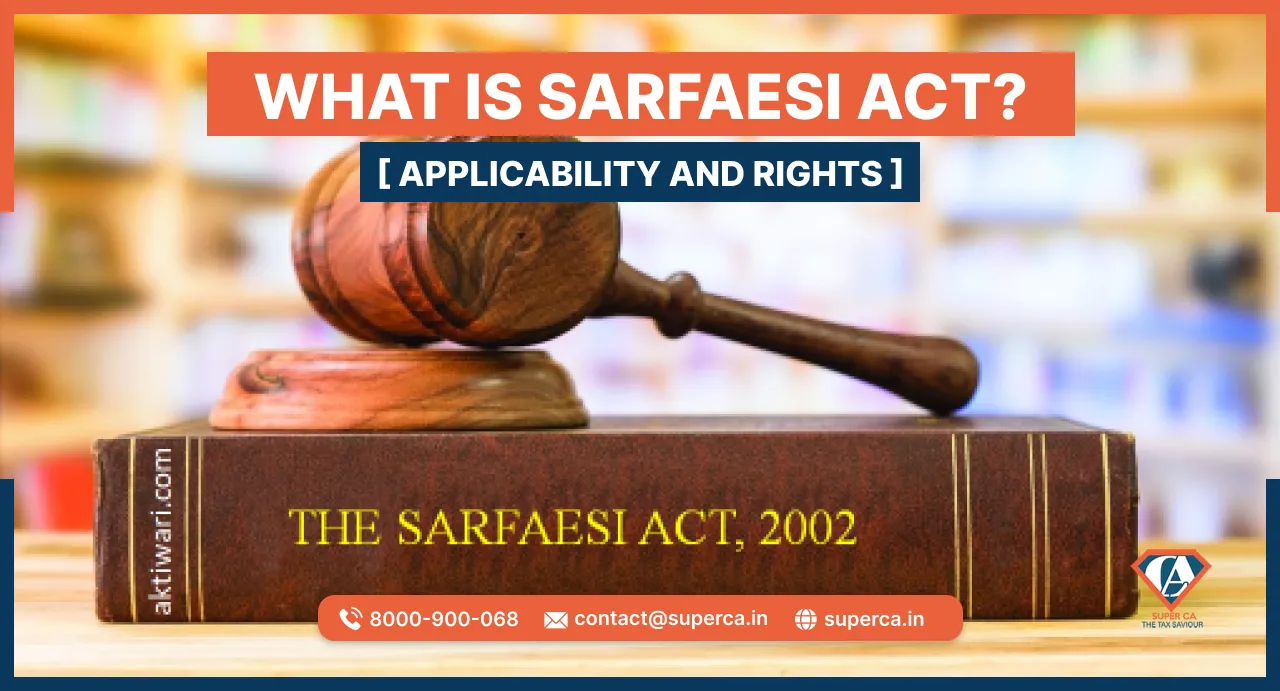What is SARFAESI Act? Applicability and Rights


The SARFAESI Act is also known as the Securitisation and Reconstruction of Financial Assets and Enforcement of Securities Interest Act. This act was issued in 2002 and is a part of the Indian Regulations which were implemented in the country in 2004.
The SARFAESI Act was enforced in order to allow various financial institutions and banks to organize auctions of properties either commercial and residential, in case the borrowers fail to repay their loans. The SARFAESI Act also allows banks in recovering their Non- Performing Assets or NPAs without having the courts intervene in the process. In this blog, we will learn more about the SARFAESI Act, its applicability and Rights.
The SARFAESI Act,2002 grants the banks a special power which allows them ‘to seize.’ Under the provisions of the SARFAESI Act, banks are permitted to issue written notices to the borrower who is a defaulter. This written notice insists that his liabilities will be discharged after 90 days of default. If the person who borrowed from the bank does not respond to this written notice, then the bank can form the following actions under the SARFAESI Act:
The provisions of the SARFAESI Act apply to outstanding loans i.e. the loans above Rs. 1 Lakh. Such loans are categorised as NPAs or Non-Performing Assets. Those NPA loan accounts that amount to less than 20% of the interest and principal are not counted under this Act. The SARFAESI Act may not be applied to the following:
Under the provisions of the SARFAESI Act, the following are the rights that are given to the borrowers:
The SARFAESI Act has devised provisions for three different methods of recovery of NPAs. These are as follows:
Enforcing the security without having the interruption of the courts: The SARFAESI Act, enables banks and financial institutions to perform the following:
Reconstruction of Assets: Asset reconstruction is a method that is responsible for the empowerment of asset reconstruction companies in India. Reconstruction of assets can be done by managing the business of the borrower by obtaining it, by selling either a part of the business or the whole business or by rescheduling the debt payments that need to be paid by the borrower under the provisions of the SARFAESI Act.
Securitisation: The process by which marketable securities are issued is known as securitisation. These securities are backed by a group of existing assets such as home loans or auto loans. An asset is sold after its conversion into a marketable security. In order to raise funds from only Qualified Institutional buyers, the reconstruction or securitisation companies form various schemes to acquire financial assets.
Transaction Register: A central register or simply a register is maintained at the head office of the Central registry in both non-electronic and electronic form. This form holds details of the transactions along with the creation and payment of security interest that is related to reconstruction of financial assets and securitisation.
An Amendment bill known as the Enforcement of Security Interest and Recovery of Debts Laws (Amendment) Bill was passed. This bill contains amendments for two acts, the SARFAESI Act and the Recovery of Debts Due to Banks and Financial Institutions. The following points are stated in the Amendment:
If banks do not receive a request during the auction, then they are free to ask for any sort of immovable property. This will allow banks to adjust the debt with the amount of money paid for the property. This will help banks to secure assets in partial fulfilment of the loan amount that was defaulted.

|
Essential LLP Registration Documents: A Complete Checklist for Entrepreneurs Author: Rahul Singh 04 Apr, 2024
|
Get inspired by these stories.